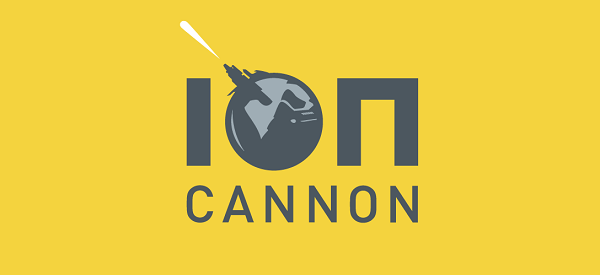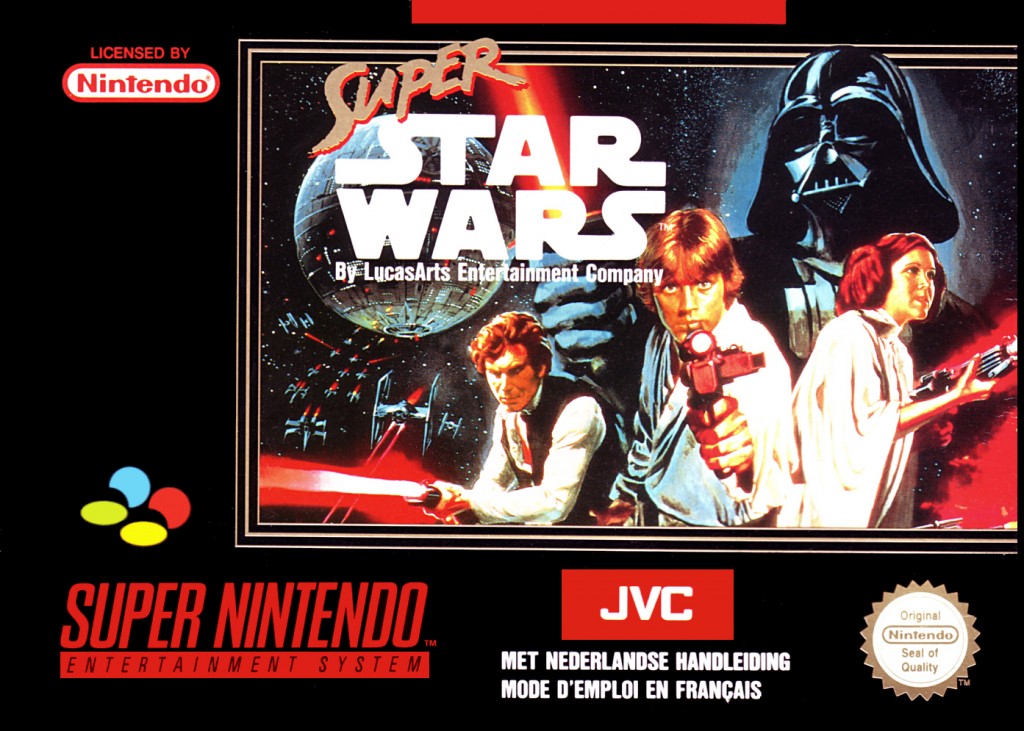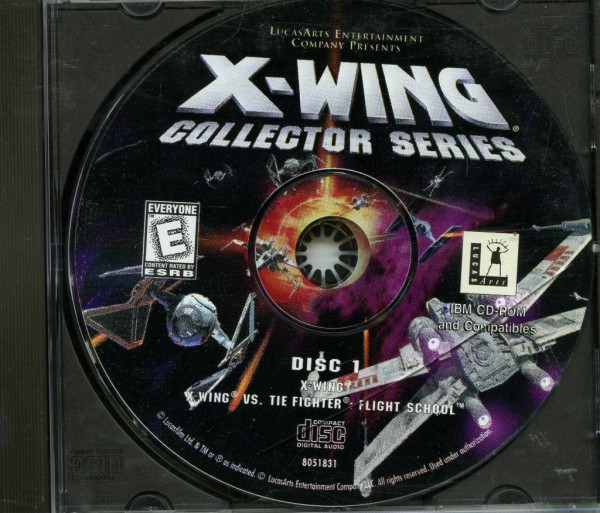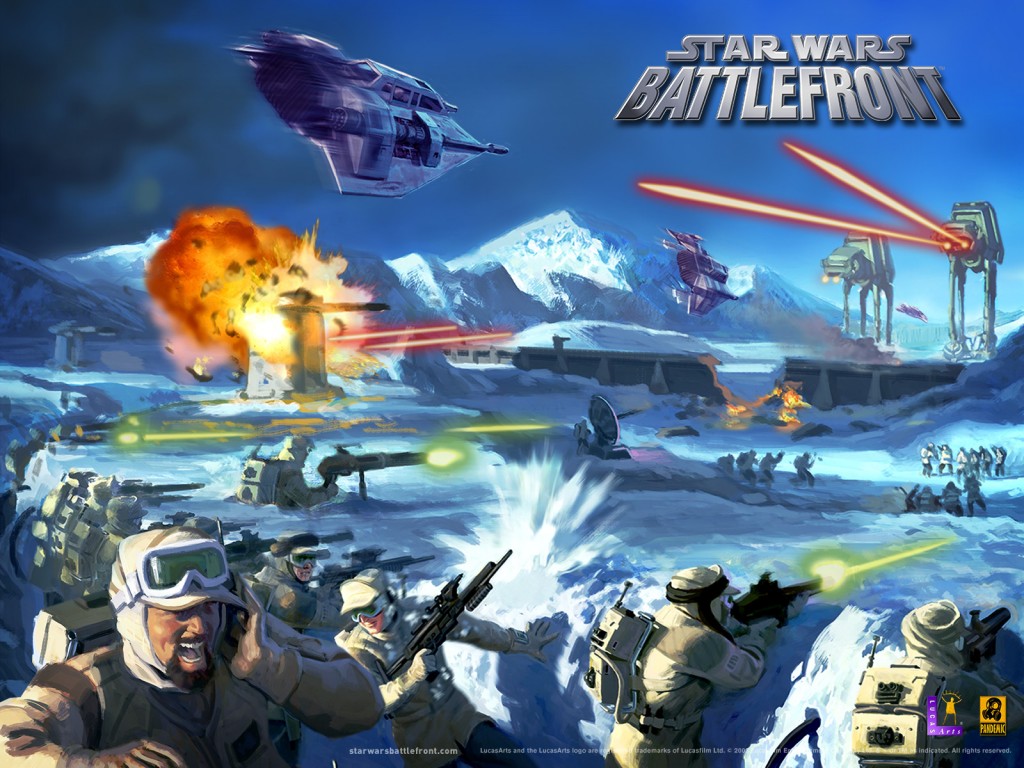With the purchase of Lucasfilm by Disney, many Star Wars fans are pondering the future of their favorite franchise. The takeover is not the disaster that naysayers would have you believe. It could be argued that Lucasfilm’s actual film division lost their way long ago, and out of the many companies to form their own Rebel alliance with Lucas, Disney have been one of the more successful in their creative efforts, especially in their theme park tie (fighter?) ins.
From a retro gaming perspective, the expanded universe has not exactly bullseyed every Womp Rat. For every Empire Strikes Back we have a Phantom Menace. So which are the force still strong with? And with new games, can Disney ensure that Greedo doesn’t shoot first? (okay, enough.)
There have been literally hundreds of Star Wars videogames over the years, the first being 1982s Empire Strike Back for Atari 2600 and Intellivision. This game is by far the most playable of any of the 1980s games based on the Star Wars universe. Hardly a modern classic, but those who have a taste for the truly retro could do far worse than the game, boasting smooth, fast scrolling and recognizable sprites and music.
The only other notable 8-bit classic is JVC’s Star Wars, released on NES and Sega Master System in 1991, after the industry had fully recovered from the crash of 1983. This was an interesting run and gun style game with some tricky platform layouts. What made it stand out from the crowd was the innovative hub world system for selecting levels, where you could ride a sand speeder from a top down perspective to select the level you wanted to play. This feature was unfortunately removed from the portable conversions.
A NES sequel was released in 1992, but by that point people had moved on to the vastly superior Super Star Wars Trilogy of games for the SNES. These are well worth checking out today, with exceptionally well designed side scrolling levels, and cinematic Mode 7 3D sections allowing you to pilot numerous vehicles from the films. The best of the series is probably the original Super Star Wars.
For those who wanted to really feel like they were living the movie, one of the very best ways to experience this was in the arcade. 1983 and ’85 saw Atari release Star Wars and Empire Strikes Back cabinets which used 3D vector graphics to portray realistic dog fights and space battles. Star Wars was the first game to feature color vector graphics and digitized speech from a film, and was hugely impressive at the time, though some of that sheen has worn off when replaying it today.
An update to Atari’s arcade formula was produced by Sega in 1993. Star Wars Arcade actually holds up very well even today, using solid polygon graphics for a more believable world. In 1994 the game was converted to Sega’s ill-fated 32X upgrade for the Megadrive/Genesis. This was the first way that 16-bit Sega fans could experience Star Wars, unless using a Power-Base converter, and was actually the main reason that anyone bought the 32X at launch. A short lived upgrade, which was essentially dead on arrival as many people waited for the Saturn or Playstation, one of the most compelling reasons for a retro collector to own the system is the excellent home conversions of Model One classics, including Virtua Fighter, Virtua Racing, and Star Wars Arcade. The 1998 sequel to the game, Star Wars Trilogy Arcade is an absolute classic, using Model 3 technology to impressive effect. Unfortunately no home conversion exists, but many arcades still house this popular cabinet, and I’d highly recommend giving it a blast.
1993 saw a wave of new consoles, embracing CD-ROM technology, struggling to take advantage of the vastly larger storage capacities, and improved sound and video it afforded. Many felt that the future of games was in interactive movies and multimedia software. Two of the more successful games of this era were Star Wars Chess, which was similar to Battle Chess, with fun battles between humorously animated Star Wars characters, and Rebel Assault. This took digitized 3D rendered video and added a higher level of interactivity than many, such as the beautiful but limited Dragon’s Lair and Space Ace. Many people bought into the idea of interactive movies, but were disappointed with how limited the technology actually was, but Sega/Mega CD owners found Rebel Assault had more interactivity than most, and well produced video sections that at least showed the potential of where this type of game could have progressed, had they not fallen out of favour to 32 bit polygon graphics just a year later. For those wanting to experience the game nowadays, the best versions are the PC or 3DO conversions, as these had far higher video quality than the more common Sega version. A sequel was released in 1995 for PC and Playstation, which boasted the first live action Star Wars footage since Return of the Jedi, however by that time the interactive video formats had died a death and PC gamers had moved on to the far more fun X-Wing series.
X-Wing was released in 1993 and was a fun polygonal flight simulator, with a rich story element. The series really took off with it’s sequel, the exceptional Tie Fighter. Released in 1994, this added Gouraud shading for a more realistic feel, and was far more polished. In 1997, X-Wing vs Tie Fighter was released with a vastly improved 3d engine. The game was a critical flop, being more concerned with multi-player aspects than the story mode, however this was rectified with expansion pack Balance of Power and re-release of the original two games remade with the new engine. The remade Tie Fighter is one of the best Star Wars experiences available for retro fans. 1999 saw the last in the series, X-Wing Alliance, which added the Millennium Falcon, and allowed multiple crew in the same craft.
In 1995, a first person shooter called Dark Forces was released for the PC, using a similar pseudo 3D engine to the original Doom. The game was fun but flawed, and the Playstation conversion was buggy and suffered a poor frame rate. The game paved the way for a superior sequel, Jedi Knight which used similar technology to Quake. Jedi Knight II: Jedi Outcast, and Jedi Academy in 2003 added third person perspectives, light sabres, force powers, and many things Star Wars fans had been craving in an action game.
1996 saw the Nintendo 64 launch with Shadows of the Empire as one of the key titles. Whilst not a perfect game it certainly did a good job of showing off the technology, and had varied gameplay. Looking back, more playable N64 Star Wars games are Episode One Racer, and Rogue Squadron, both of which play well today, especially if you have the N64 Expansion Pak upgrade. Racer also had a decent conversion to Dreamcast, and a similar but unrelated arcade game. Rogue Squadron had two sequels for the Nintendo Gamecube, both of which are definitely worth playing through.
Of course, many more Star Wars games have come and gone, excellent examples to check out are the Knights of the Old Republic, Battlefront and Empire at War series. Those seeking modern games with a retro edge should definitely check out the Lego Star Wars series, which are great fun and really show a lot of affection for the original films. Just released this month is the retro tinged Angry Birds Star Wars and I’d go so far as to argue that the Star Wars improves the game, with the light saber, blaster and Millennium Falcon Power-ups being a joy to use.
So where does the Disney buy-out leave the future of Star Wars video games? Well traditionally Disney have a pretty decent track record of licensing well designed, nicely presented kids games based on their movies and franchises. Their strong ties with Lego means that more Lego Star Wars games are almost guaranteed, and maybe, just maybe, the excellent Disney and Lucas designed Star Tours theme park rides will get the video game treatment they’ve been calling out for since 1987. Perhaps they could even mix more Disney owned brands with Star Wars: Marvel vs Star Wars – I’m looking at you Capcom! What about Star Wars with Muppets: can you imagine Yoda but with the voice of Fozzie Bear? Oh wait…
Guest post by Stuart Kerr of Liberty Games
Author: admin
The Star Wars Report: A Star Wars Podcasting Network and Website.





No love for Force Unleashed? With the new technologies they used they were groundbreaking, and I enjoyed them a lot…..